Top 10 Urban Trees for Thriving Bird Populations in 2024
Introduction
Urban areas might not seem like ideal habitats for birds, but with the right trees, cities can become thriving sanctuaries for our feathered friends! Did you know that certain trees are particularly effective at attracting and supporting bird populations? Whether you’re a city planner, a gardener, or simply a nature enthusiast, planting the right trees can make a significant difference. In this article, we’ll explore the top ten urban tree species that provide essential resources for diverse bird populations.
Why Urban Trees Matter for Bird Populations
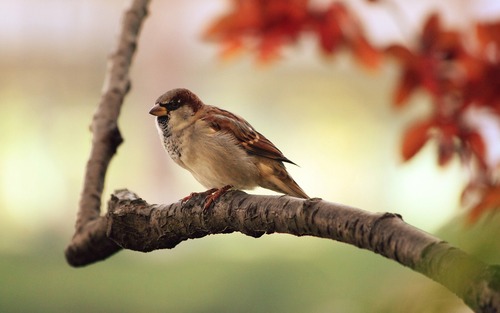
A Sparrow Perches on a Branch – Photo by Pixabay
Urban environments can be challenging for birds, with limited natural habitats, threats from predators, and disruptions to feeding and nesting patterns. However, incorporating the right trees into our cities can make a world of difference. Trees provide vital resources like food, shelter, and nesting sites, while also creating corridors for bird migration and enhancing overall biodiversity.
By strategically planting bird-friendly trees, we can transform our urban landscapes into thriving oases for a diverse array of feathered residents. These trees not only beautify our surroundings but also play a crucial role in supporting the delicate balance of urban ecosystems. From the mighty oak to the charming dogwood, each species on our list offers unique benefits that can help our city-dwelling birds thrive.
Factors to Consider When Choosing Trees for Urban Birds
When selecting trees to support urban bird populations, there are several key factors to keep in mind. Firstly, it’s important to choose native species that are well suited to the local climate and ecosystem. Native trees often provide better food sources and nesting habitats for native bird species, creating a harmonious symbiosis.
The size and growth rate of the tree are also important considerations. Faster-growing medium-sized trees can quickly establish themselves and offer valuable resources, while larger, slower-growing species may take more time but ultimately provide more substantial canopy cover and nesting opportunities. Additionally, the tree’s fruit, nut, and seed production and its ability to attract insects are key factors in determining its appeal to a diverse range of bird species.
Top 10 Trees for Urban Bird Populations
Now that we’ve explored the importance of urban trees for bird populations and key selection factors, let’s dive into our top ten picks. These tree species truly stand out for supporting diverse feathered friends in the city. By strategically incorporating these top-performing trees, urban planners, homeowners, and communities can cultivate veritable bird oases within the concrete jungle. While the best local trees depend on factors like climate and regional species, this list provides an excellent starting point for building a bird-friendly urban landscape—one that harmoniously blends the beauty of nature with the pragmatic needs of city life:
1. Oak Trees

A Majestic Oak Tree Viewed from Below – Photo by Magda Ehlers
Oak trees are true superstars when it comes to supporting urban bird populations. With their impressive diversity of species, oak trees can host up to five hundred different types of insects and spiders, providing a rich food source for a wide variety of birds. The acorns produced by oak trees are also a valuable food source, especially for species like woodpeckers, jays, and nuthatches. What’s more, the dense, sprawling canopies of oak trees offer ample nesting opportunities for birds seeking shelter and protection.
2. Maple Trees
Maple trees are another excellent choice for urban bird habitats. Their abundant seed production provides a crucial food source, especially in the spring and fall. The dense, layered canopies of maple trees also offer excellent shelter and nesting sites for a diverse range of songbirds, from vibrant warblers to chattering chickadees. Additionally, maple trees are known for their striking seasonal displays, adding visual interest and beauty to the urban landscape.
3. Cherry Trees

A Budding Cherry Tree Hosts a Small Bird – Photo by Nikola Tomašić
Cherry trees are a delightful addition to any bird-friendly urban landscape. In the spring, their showy blossoms attract a variety of pollinators, which in turn attract insect-eating birds. Later in the season, the sweet, juicy cherries provide a valuable food source for many species, including robins, cedar waxwings, and orioles. Cherry trees also offer nesting opportunities in their branches and can thrive in smaller urban spaces.
4. Birch Trees
Birch trees are a versatile choice for urban bird habitats. Their peeling white bark is attractive to insects, which in turn draws in insect-eating birds like woodpeckers, nuthatches, and warblers. Birch trees also produce small, nutritious seeds that are relished by finches, sparrows, and other seed-eating species. A birch tree’s light, airy canopy allows for the growth of diverse understory plants, further enhancing the overall biodiversity of the urban landscape.
5. Dogwood
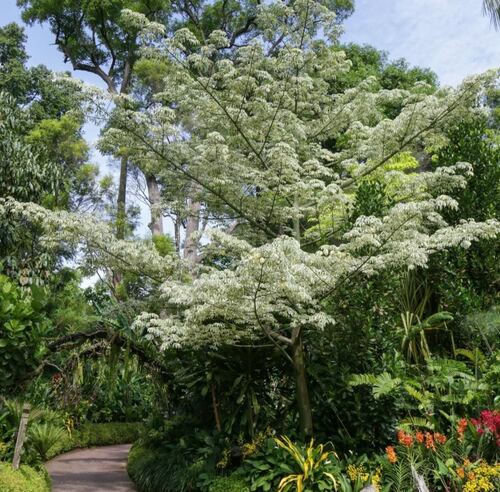
A Dogwood Tree in an Urban Park – Photo by Wolfgang Wendefeuer
Dogwood trees are a charming and bird-friendly addition to any city garden or park. In the spring, their delicate white or pink flowers attract a variety of pollinators, which in turn draws in insect-eating birds. Later in the year, the bright-red berries provide a valuable food source for birds, particularly during the fall and winter months when other food sources may be scarce. Dogwood trees also offer excellent nesting opportunities in their dense branching structures.
6. Crabapple
Crabapple trees are a compact, versatile option for urban bird habitats. Their small, tart fruits persist well into the winter, providing a much-needed food source for birds when other resources may be scarce. In the spring, the stunning pink or white blossoms attract pollinators and other insects, drawing in a diverse array of songbirds. Crabapple trees’ manageable size also makes them a great choice for smaller urban spaces.
7. Pine
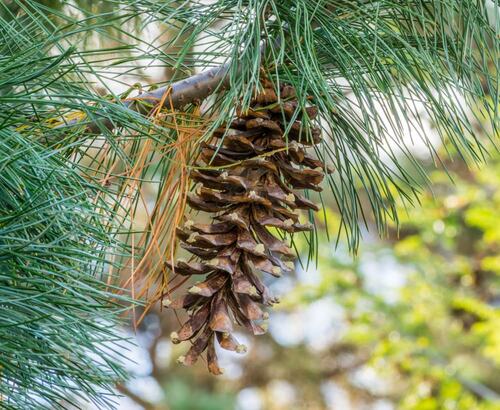
A Close-up of a Pinecone on a Branch
Pine trees are a vital component of any bird-friendly urban landscape, offering year-round shelter and nesting sites. Their pinecones and seeds provide a reliable food source for species like the crossbill, while the dense evergreen foliage offers protection from predators and harsh weather conditions. Pine trees also create a sense of depth and structure in the urban canopy, providing important roosting and perching spots for various bird species.
8. Serviceberry
Serviceberry trees are a delightful choice for urban bird habitats. In early summer, they produce clusters of edible berries that are eagerly consumed by a wide range of songbirds, including robins, thrushes, and waxwings. The tree’s small multi-stemmed growth habit also makes it well suited for smaller urban spaces, while its spring blossoms and vibrant fall foliage add visual interest to the landscape.
9. Hawthorn
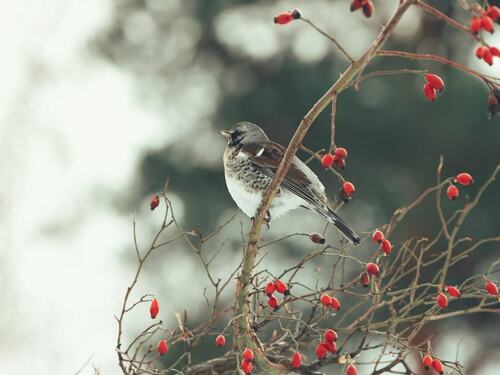
A Thrush on a Winter Hawthorn Tree – Photo by Efrem Efre
Hawthorn trees are a versatile option for urban bird populations, with their dense, thorny branching structure providing excellent nesting and roosting opportunities. The small, tart berries that appear in the fall and persist into winter are a valuable food source for birds when other resources may be scarce. Hawthorns also attract insect life, which draws insect-eating birds like warblers and flycatchers.
10. Elm Trees
While elm trees have faced significant challenges in recent decades due to Dutch elm disease, they remain an important component of urban bird habitats. Their large, spreading canopies offer ample nesting sites and shelter for a diverse array of bird species. Elm trees also produce seeds that are relished by finches, sparrows, and other seed-eating birds. With careful selection of disease-resistant cultivars, elm trees can still play a vital role in supporting thriving urban bird populations.
How to Plant and Maintain Urban Trees for Birds
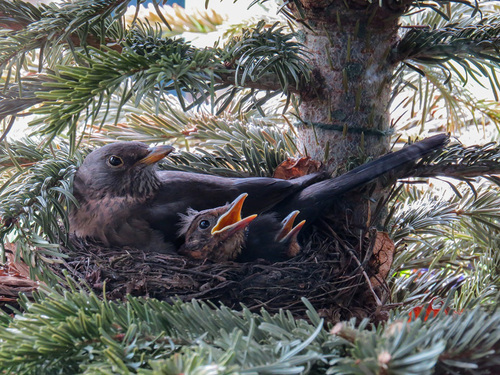
Blackbirds Nesting in an Evergreen Tree – Image by Garten_gg
To ensure the long-term success of your bird-friendly urban trees, it’s important to follow best practices for planting and maintenance. Proper site selection, soil preparation, and watering techniques are crucial for establishing healthy, vigorous trees. Pruning and other tree care should also be done with an eye toward preserving the tree’s natural structure and maximizing its value as a bird habitat.
Case Studies: Successful Urban Tree Programs for Birds
There are many inspiring examples of urban tree programs that have successfully enhanced bird populations in cities worldwide. In Chicago, the city’s “One Million Trees” initiative has not only beautified the urban landscape but also created vital habitats for a wide range of bird species. Similarly, in Melbourne, Australia, the “Urban Forest Strategy” has transformed the city’s streets and parks into verdant sanctuaries for urban birds.
These case studies demonstrate that by strategically incorporating the right trees into our cities, we can create thriving bird populations and foster a deeper connection between urban residents and the natural world. As we continue to face the challenges of urbanization, these models offer valuable insights and inspiration for building more bird-friendly cities.
Conclusion
As we’ve seen, the right trees can transform our urban landscapes into thriving havens for bird populations. From the mighty oak to the charming dogwood, each of these top ten trees plays a crucial role in supporting our feathered neighbors. By incorporating these species into our city planning and personal gardens, we’re not just planting trees—we’re cultivating biodiversity, enhancing our quality of life, and creating a sustainable future for urban wildlife.
Remember, every tree planted is a step towards a greener, more bird-friendly city. So why not start your own urban bird sanctuary today? Whether you’re planting a single tree in your backyard or advocating for more green spaces in your community, you’re making a real difference. Let’s work together to ensure our cities remain alive with the songs and sights of diverse bird populations for generations to come!
As always, when you need help choosing and planting the best trees for your space, contact Arborist Now for the highest level of expertise!


